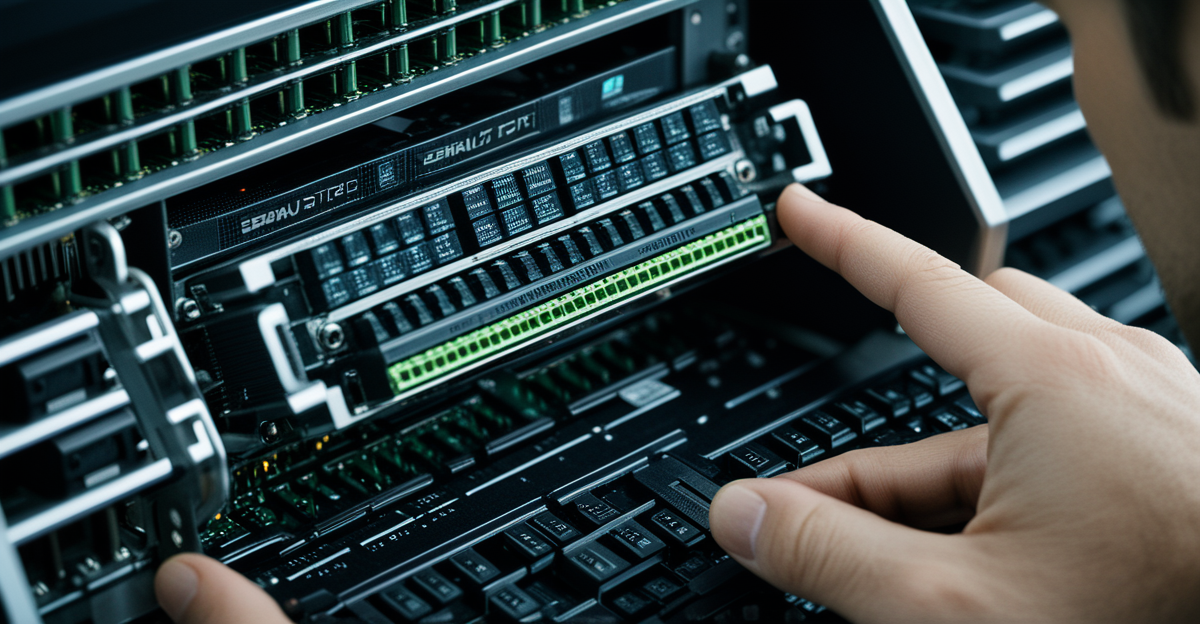Third party maintenance reshapes IT hardware support by extending equipment lifecycles and cutting costs without sacrificing quality. It offers flexible, tailored contracts that keep critical data center systems running smoothly beyond OEM service limits. Explore how choosing a trusted TPM provider can drive efficiency, reduce expenses by up to 70%, and maintain expert, around-the-clock support worldwide empowering your IT strategy with smarter maintenance solutions.
Understanding the Essentials of Third Party Maintenance (TPM) for IT Hardware
You can view more details on this page: https://evernex.com/data-center-third-party-maintenance/. Third Party Maintenance (TPM) delivers vendor-independent maintenance services for IT hardware, stepping in when Original Equipment Manufacturer (OEM) support ends or becomes too expensive. TPM providers maintain and repair hardware from multiple brands such as Dell, IBM, HPE, Cisco, NetApp, and many others even for equipment that is designated End-of-Service-Life (EOSL) by its manufacturer. This makes TPM a cornerstone option for organizations seeking cost-efficient multi-vendor hardware support after standard warranties expire.
Topic to read : Elevate it maintenance using innovative third-party services
The fundamental distinction between OEM and TPM lies in their service model and lifecycle focus. OEMs prioritize new hardware sales, often increasing support costs as equipment ages, indirectly pushing customers toward upgrades. TPM, by contrast, emphasizes value over the extended hardware lifecycle. Contracts are flexible, not dictated by EOSL dates, and can be tailored to business needs whether you require short-term support, ongoing management, or break/fix repair services.
Key advantages of TPM include significant cost savings, sometimes as high as 70% compared to traditional OEM contracts. This enables organizations to reallocate IT budgets from routine support to more strategic initiatives. TPM also simplifies maintenance management: with a single provider, companies can consolidate multiple vendor contracts into one agreement, reducing administrative burden and improving response times. Sustainability is another immediate benefit, as TPM extends the lifespan of IT assets and supports responsible hardware lifecycle management ultimately reducing e-waste.
Also to see : What are the benefits of UK-led innovations in edge computing?
Potential risks, such as limited access to proprietary diagnostic tools, can be managed through provider vetting and detailed service level agreements (SLAs). For organizations facing warranty expirations or costly upgrade pressures, TPM represents a future-ready alternative that balances performance, flexibility, and budget management.
Key Advantages of TPM: Operational, Financial, and Environmental
Extending Equipment Lifecycle and Maximizing ROI
Third party maintenance providers play a vital role in extending the operational lifespan of equipment. By relying on alternative maintenance services, organizations can continue data center hardware maintenance for years, often well past the expiration of manufacturer support. This approach not only preserves existing investments but also allows more flexibility for managing hardware warranty expiration, especially when evaluating cost-effective hardware repair solutions. Supporting legacy systems, third-party IT hardware support ensures businesses squeeze maximum value from their assets, optimising return on investment by reducing IT maintenance costs.
Up to 70% Savings Versus OEM Support and New Hardware Purchases
Switching to third party maintenance providers unlocks significant financial benefits. Many users report up to 70% savings compared to OEM contracts, thanks to vendor-independent maintenance services and smart use of cost-effective hardware repair solutions. These reductions are especially noticeable in post-warranty server maintenance and enterprise hardware support alternatives. Consolidated multi-vendor hardware support further simplifies budgeting, while extended hardware lifecycle management enables businesses to redirect savings into strategic IT initiatives.
Supporting Sustainability by Preventing E-Waste through Continued Hardware Use
Adopting third party maintenance providers directly advances sustainability goals. Prolonging the lifespan of IT assets reduces the need for new hardware and minimizes electronic waste. Environmental impact of hardware maintenance lessens as companies embrace multi-vendor hardware support, using extended hardware lifecycle management to promote responsible consumption. This careful IT asset approach aligns with broader sustainability goals while ensuring continued and reliable operation for future needs.
How Third Party Maintenance Works in Practice
Multi-vendor hardware support is the cornerstone of third-party managed maintenance services. These providers enable organizations to extend the operational lifespan of diverse assets servers, storage systems, and networking equipment beyond manufacturer coverage. Businesses benefit by leveraging vendor-independent maintenance services that unify post-warranty server maintenance for brands like Dell, HPE, IBM, and Cisco under a single, streamlined process.
Providers utilize proactive monitoring and tailored maintenance service level agreements. Customizable SLAs help IT teams manage risk, with clear response targets for both on-site and remote intervention. Most third-party network maintenance models include 24/7 support and ongoing diagnostics, enabling rapid resolution of faults before downtime impacts operations. Businesses can expect SLAs to address needs for rapid break-fix services, scheduled preventative care, and legacy system coverage empowering teams to choose response times and coverage levels that fit budget and operational realities.
The onboarding process with third-party managed maintenance services is seamless. Providers can supplement existing OEM contracts, allowing facilities to migrate components gradually, reducing disruption and risk. Contracts are structured to integrate alongside legacy and new equipment coverage, letting organizations consolidate multi-vendor hardware support into a single relationship freeing IT teams from the complexity of multiple post-warranty server maintenance agreements and giving flexibility as infrastructure evolves.
Choosing a TPM Provider and Navigating Common Considerations
Evaluating third-party maintenance vendors requires a multi-dimensional approach. Look for providers offering comprehensive service coverage, strong technical expertise, and global accessibility. Leading third-party maintenance firms, such as Procurri, Evernex, and M Global, stand out by delivering multi-vendor hardware support and reliable third-party hardware replacement services. Parts availability is crucial; questions about inventory, especially for legacy systems, should be directly asked during vendor selection.
Risk management in third-party maintenance is essential for business continuity. Challenges may involve diagnostics tools, compliance requirements, and limited software support. Mitigating these risks often comes down to selecting vendors who maintain robust parts stock, adhere to maintenance service level agreements, and offer clear escalation processes. Tier-one providers demonstrate transparent SLAs optimized for uptime and deliver on both remote third-party maintenance support and on-site third-party repair services.
Highlighting third-party maintenance for legacy systems, providers like Evernex enable cost-effective hardware repair solutions, even as OEMs end support for aging devices. Extended hardware lifecycle management becomes feasible with customizable contracts and proactive monitoring, maximizing return on existing investments. Organizations of varying scale achieve sustained value by optimizing downtime with third-party support and leveraging vendor-independent maintenance services for both current and legacy assets.










